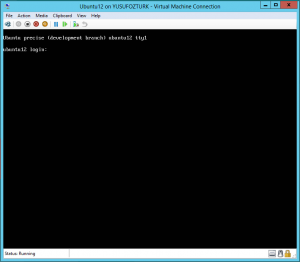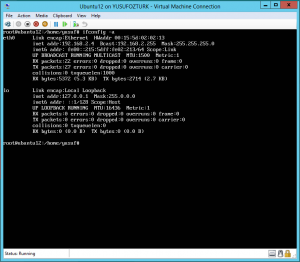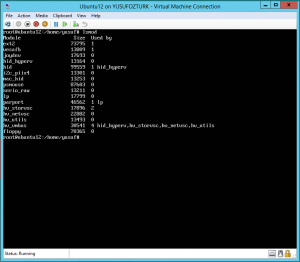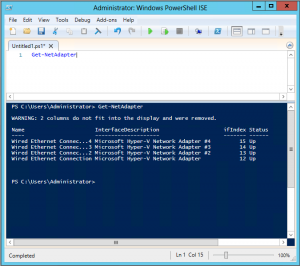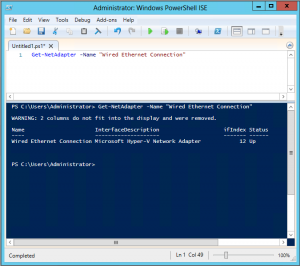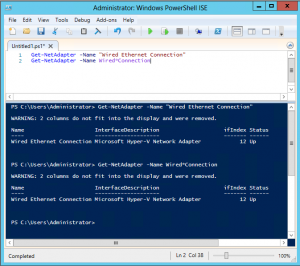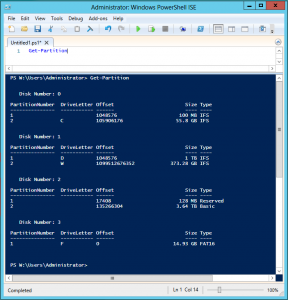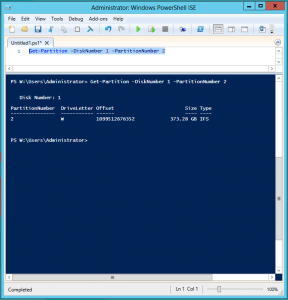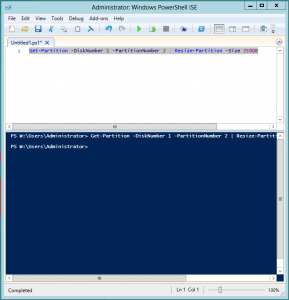
Categories

Sponsors


Archive
 Blogroll 
Badges


Community

|
Posted in Linux Server, Virtual Machine Manager | 4 Comments | 8,667 views | 26/03/2012 04:19
Ubuntu 12 is coming with Hyper-V drivers for the best integration and usability. Ubuntu 12 is still in Beta like Hyper-V v3 but results are promising. I’m posting some important screenshots from Ubuntu 12. You can also find benchmark results of new Ubuntu 12 on Hyper-V v3. 1. Ubuntu Login Screen and no “SMBus Base Address Uninitialized” warning anymore! 2. Ubuntu 12 recognizes Hyper-V synthetic network driver by default. 3. Let’s see installed Hyper-V modules.
Posted in Virtual Machine Manager, Windows Powershell | No Comment | 5,552 views | 19/03/2012 21:12
Hello, Info: SetLinuxVM now supports Hyper-V v3 and SCVMM 2012 SP1 as well!
After number of bug fixes, improvements and new functionalities, Set-LinuxVM reached to version 3.1 stable. Fixed bugs: New functionalities: General functionalities: Copyright (C) 2012 Yusuf Ozturk
This program is free software; you can redistribute it and/or modify it under the terms of the GNU General Public License as published by the Free Software Foundation; either version 2 of the License, or (at your option) any later version. This program is distributed in the hope that it will be useful, but WITHOUT ANY WARRANTY; without even the implied warranty of MERCHANTABILITY or FITNESS FOR A PARTICULAR PURPOSE. See the GNU General Public License for more details. You should have received a copy of the GNU General Public License along with this program; if not, write to the Free Software Foundation, Inc., 59 Temple Place, Suite 330, Boston, MA 02111-1307 USA Download: Donate: Thanks to support this open source project! Usage: 1. First, you should allow signed Powershell scripts:
2. Extract file and move “SetLinuxVM” directory under to “C:\Windows\System32\WindowsPowerShell\v1.0\Modules”. 3. Import as a module:
4. That’s it. To see how to use it:
5. Follow to instructions. You can search in my blog for how to create Linux VM templates!
Posted in Windows Powershell | 1 Comment | 5,192 views | 06/03/2012 22:21
In this post, I’ll talk about network operations on Windows Server 8 Beta. I have a virtual machine on my Hyper-V server with 4 virtual network adapter. They are all binded to same network, so I can set same ip addresses on them and I’m also able to make them teamed. 1. First of all, lets get network adapters.
I see all network adapters with some informations like name, description, ifindex and status. 2. I’ll get one of them and see full details.
Btw, you can also use wildcard (*) in your commands to make them easy.
As you see, both of them works as we expected.
Posted in Windows Powershell | 1 Comment | 3,103 views | 05/03/2012 02:16
You may not use Microsoft WebMatrix 2 Beta if your region format is not English. In that case you will probably see “index was outside the bounds of the array” when you try to edit files. I wrote a quick workaround in Powershell to solve this problem.
You should use this script to start WebMatrix 2 Beta. You can change shortcut path to execute this script as well. Applied to: PowerShell v2, PowerShell v3
Posted in Windows Powershell, Windows Server | No Comment | 7,757 views | 05/03/2012 00:44
In this post, I’ll talk about disk operations on Windows Server 8 Beta. I have Windows 7 and Windows Server 8 Beta on a PC and I want to install Windows 8 Beta as well. I will resize my current Windows Server 8 partition and create a new partition for Windows 8 Beta. When I want to do this operation via Server Manager GUI (in case of you have Server 8 with GUI), I don’t see any option for “Shrink”. Maybe I’m looking to wrong section but here it is: So lets do this operation via Powershell. 1. First of all lets get partition information.
2. My drive letter is W. So I can get detailed information.
3. Drive size is 373 Gb. I’ll resize it to 250 Gb.
|










